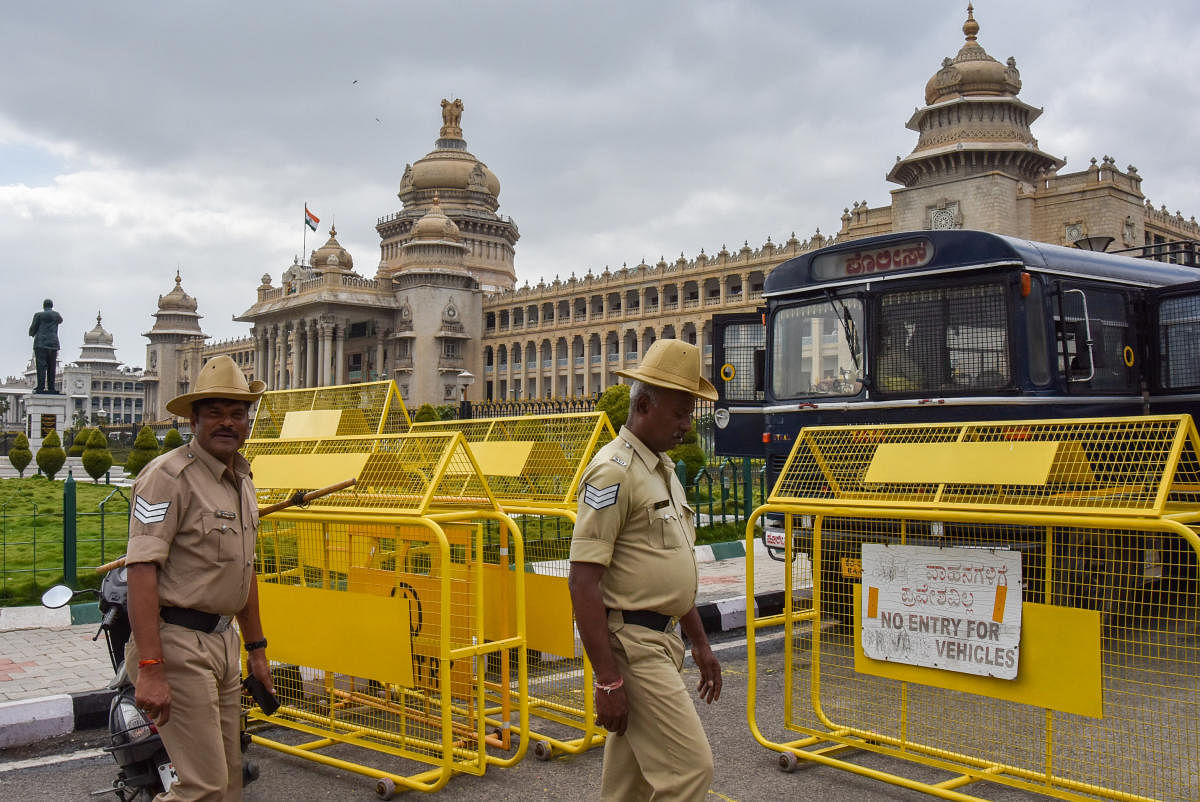As the protests against the controversial Citizenship Amendment Act (CAA) continue to gain momentum, governments at the Centre and in the states, especially the BJP-ruled ones, have resorted to coercive measures to curb them, such as imposing Section 144 prohibitory orders, in cities across India. Section 144 prohibits gatherings of more than four persons. In Uttar Pradesh, it has been imposed on the entire state of over 200 million people.
It was the Bengaluru City Police that showed the way, announcing on Wednesday evening the imposition of Section 144 in the city for three days, December 19-21, in anticipation of protests, dharnas and marches by various students’ groups and organizations. It sends a wrong signal as it amounts to suppression of voices that go against the establishment.
It is not the first time that a government is using the law to stifle dissent. History is replete with examples of governments having used the instruments of law against dissenters. The government uses draconian laws, such as the sedition provisions of the penal code, the criminal defamation law, and laws dealing with hate speech, to silence dissent. These laws are vaguely worded, overly broad, and prone to misuse, and have been repeatedly used for political purposes against critics at the national and state levels.
The problem in India is not that the Constitution does not guarantee free speech, but that it is easy to silence free speech because of a combination of overbroad laws, an inefficient criminal justice system and the lack of consistency in jurisprudence. India’s legal system is infamous for being clogged and overwhelmed, leading to long and expensive delays that can discourage people from fighting for their right to free speech.
New weapon in armour
The purpose of Section 144 is to issue an absolute order at once in urgent cases of apprehended danger. The necessity for S.144 lies in the urgency of the situation; its efficacy lies in the likelihood of being able to prevent harmful occurrences. In Radhe Das vs Jairam Mahto, the Supreme Court held that Section 144 can only be invoked in order to prevent a disturbance of the public tranquility or a riot or an affray.
Further, in Manzur Hasan vs Muhammad Zaman and Shaik Piru Bux vs Kalandi Pati, it was stressed that it must only be imposed keeping in mind the urgency of situation and the power is to be used to maintain public peace and tranquility. If there is neither an urgency calling for the application of a speedy remedy nor apprehension of danger to human life, health or safety, etc., the magistrate cannot issue an order under this section.
As it is possible to act absolutely and even ex-parte, it is obvious that the emergency must be sudden and the consequences sufficiently grave. Without these conditions, the exercise of power would be totally futile.
Any restrictions must not be opposed to the cardinal principles of right to life, liberty and freedom. Article 19(a) and 19(b) of the Constitution clearly grant the right to freedom of speech and expression and the right to assemble peaceably without arms. However, whenever authorities sense an opinion building up against them, they take refuge behind Section 144, a legacy of British rule. The colonial rulers introduced the rule in 1861, a few years after the 1857 mutiny, to keep rebels in check. No more than five persons could assemble on Indian streets.
However, even after 150 years of its formulation and more than 60 years of independence, we are still being treated as rabble-rousers up against our own country. Today, 158 years later, the echoes of colonialism reflect in our reality as S.144 remains unchanged. The right to protest peacefully for a just cause is equated with conspiracy to destabilize the government. Authorities decide to suppress public movements instead of initiating dialogue with the protesters. In such a scenario, one cannot help but mourn the death of democracy.
In the present case, the line differentiating peaceful protest and disturbance of public tranquility has been overlooked by officials imposing S.144. The students of different universities are protesting peacefully and registering their dissent against the CAA. The imposition of S.144 in such a scenario is extremely arbitrary and should only be imposed in exceptional circumstances.
In Mazdoor Kisan Shakti Sangathan vs Union of India and Anr., the Supreme Court held that it [the order to impose S.144] was not unconstitutional but recognized the right to protest and asked the government and police to frame guidelines. In our country, which cherishes the freedom struggle and the tenacious revolutionary spirit of freedom fighters, the attempt to suppress the anti-CAA protests and dissent hits at those very basic ideals. A democracy without dissenters is impossible. Free men, in the exercise of free thought, will give vent in free speech. No matter how abhorrent the thought, or its manner of expression, a mature democracy will tolerate it, and even encourage its propagation.
(The writer is a student of the National Law School of India University, Bengaluru)
